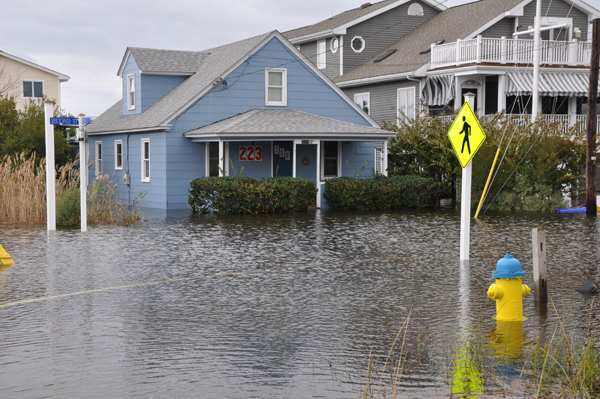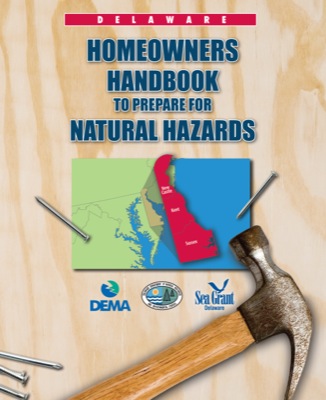Handling natural hazards
New handbook helps Delawareans prepare for hurricanes, other severe weather
12:11 p.m., Dec. 13, 2012--More than 80 major storms have threatened Delaware’s coast over the past three decades, putting lives and property at risk. Most recently, Hurricane Sandy’s heavy rainfall, high tides and floodwaters underscored the importance of having emergency plans and resilient buildings in place.
The new Delaware Homeowners Handbook to Prepare for Natural Hazards can help Delawareans get ready. The resource guides residents on practical measures that can keep them safe and minimize damage to homes and property.
Campus Stories
From graduates, faculty
Doctoral hooding
“Having a strong community that can withstand a severe storm depends on individuals taking responsibility for their property and taking preparedness actions in advance to reduce vulnerabilities,” said author Wendy Carey, coastal processes specialist with Delaware Sea Grant. “This guide enables homeowners to understand the risks and make smart decisions about how to deal with the next weather hazard – well before it strikes.”
The 116-page book was prepared as a collaborative effort by the Delaware Sea Grant College Program, the Delaware Emergency Management Agency and the Delaware Department of Natural Resources and Environmental Control.
The opening sections dispel common myths about natural disaster preparation and detail how hurricanes, northeasters, floods and tornadoes have affected Delaware in the past.
The book goes on to explain how residents can protect themselves and their families with emergency supplies, evacuation kits and reliable communication channels. Valuable information about creating wind-, flood- and rain-resistant homes is provided, along with life-saving tips about electrical and power issues.
Protecting homes with insurance is also addressed, followed by discussion of how climate change will likely worsen natural hazards in the future. Numerous useful web links and resources are included throughout.
“This book was in the works long before Hurricane Sandy developed, but that recent storm makes it all the more timely,” Carey said. “When the next hazard hits, we want every Delawarean to be ready and safe.”
The book is available for download here and more information is available by contacting Wendy Carey at 302-645-4258 or wcarey@udel.edu.
About the Delaware Sea Grant College Program
The University of Delaware was designated as the nation's ninth Sea Grant College in 1976 to promote the wise use, conservation and management of marine and coastal resources through high-quality research, education and outreach activities that benefit the public and the environment.
UD’s College of Earth, Ocean, and Environment administers the program, which conducts research in priority areas ranging from coastal hazards to seafood safety.
Article by Teresa Messmore
Photo by Wendy Carey












